Jewish Museum & Tolerance Center: Moscow, Russia
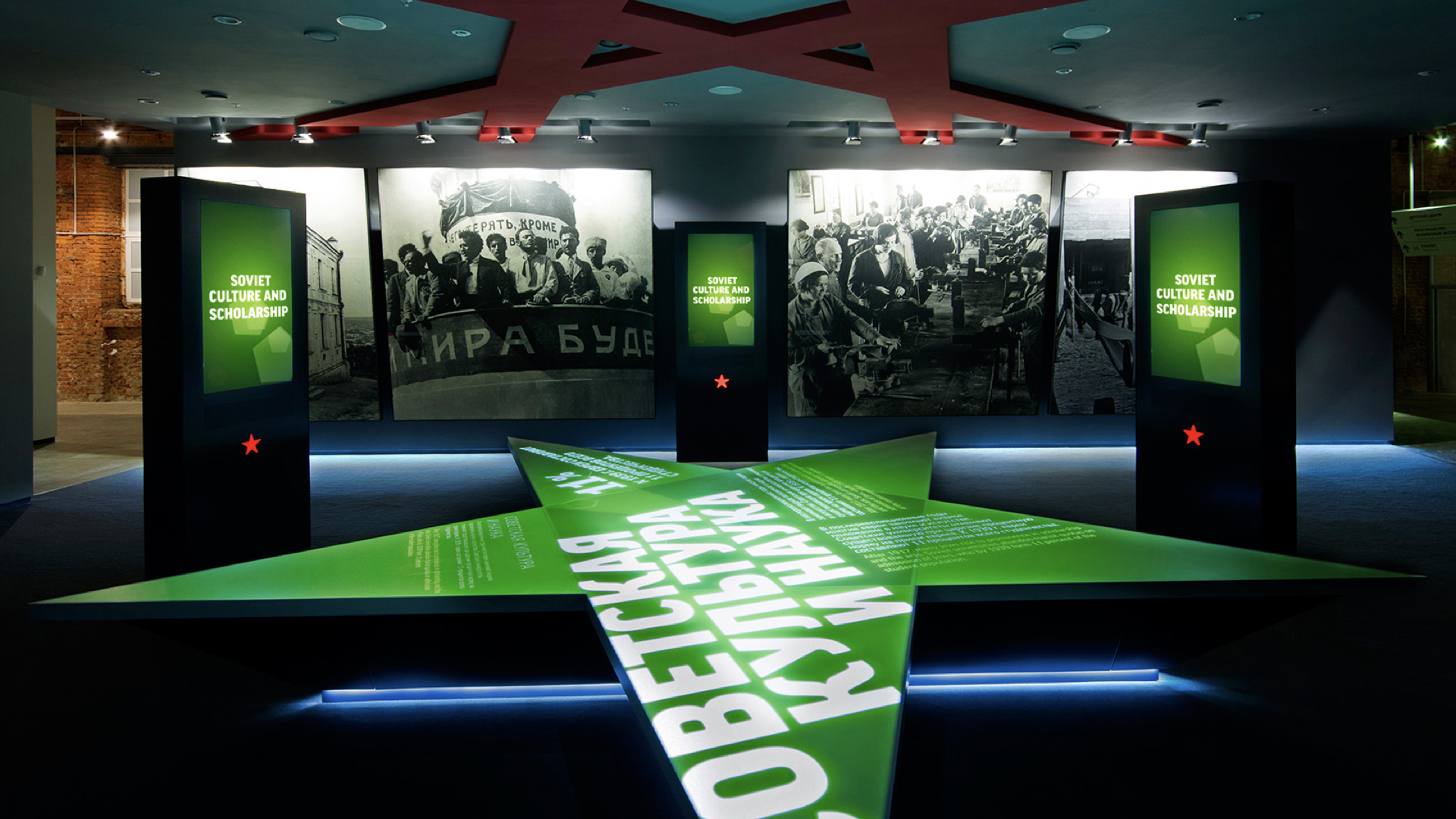

Visitors are invited to explore a traditional shtetl, visiting a synagogue, a school, a typical home on sabbath, and explore the role of work, including a metalworker and a tailor.

The recreated environment of the Shtetl includes 18 foot high theatrical scrims, as well as actual architectural elements from a real Shtetl, including the fenestrations pictured here.


A view into the market in the larger Shtetl exhibit. Sculptures of Jewish community members were installed throughout the space.

Simply waving your hand over the image of the apples triggered the image to “erase” and reveal another image below, to highlight other typical items sold in the market.

A klezmer band activates the neighborhood. Standing near the instruments triggers localized audio samples.
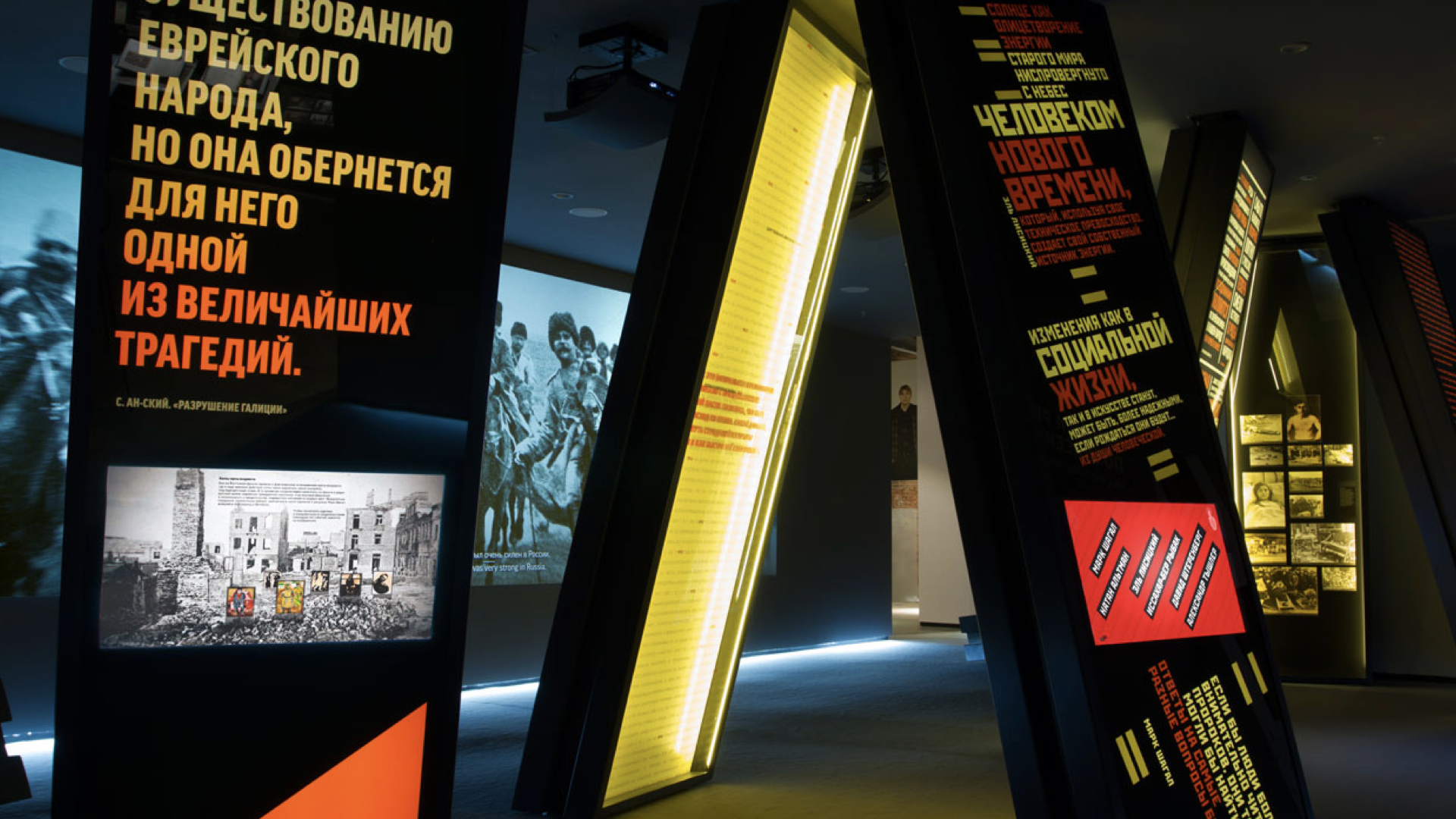
Constructivist aesthetics and chaotic architecture helped communicate the violent upheaval during the First World War and ensuing revolutions.

Running parallel to the Russian Jewish Timeline, the Living Judaism exhibit highlights the remarkable longevity and preservation of Jewish traditions in the face of generations of persecution and suppression.

Throughout the exhibit, a spine of historical photographs, artifacts, and interpretive text highlight the unchanging traditions and sacred holidays of the Jewish calendar year.

A sweeping media experience unfolding on a screen over 80’ long documents the events that brought Russia into World War II and the critical battles that led to victory.

A T-34 Tank and full-scale aircraft anchor the completion of this exhibit, complete with first-person interviews from those who fought in the war.

A contemplative space at the apex of the museum, adjacent to the Holocaust and Post-War exhibits, invites guests to honor those who lost their lives through traditional Jewish mourning techniques.
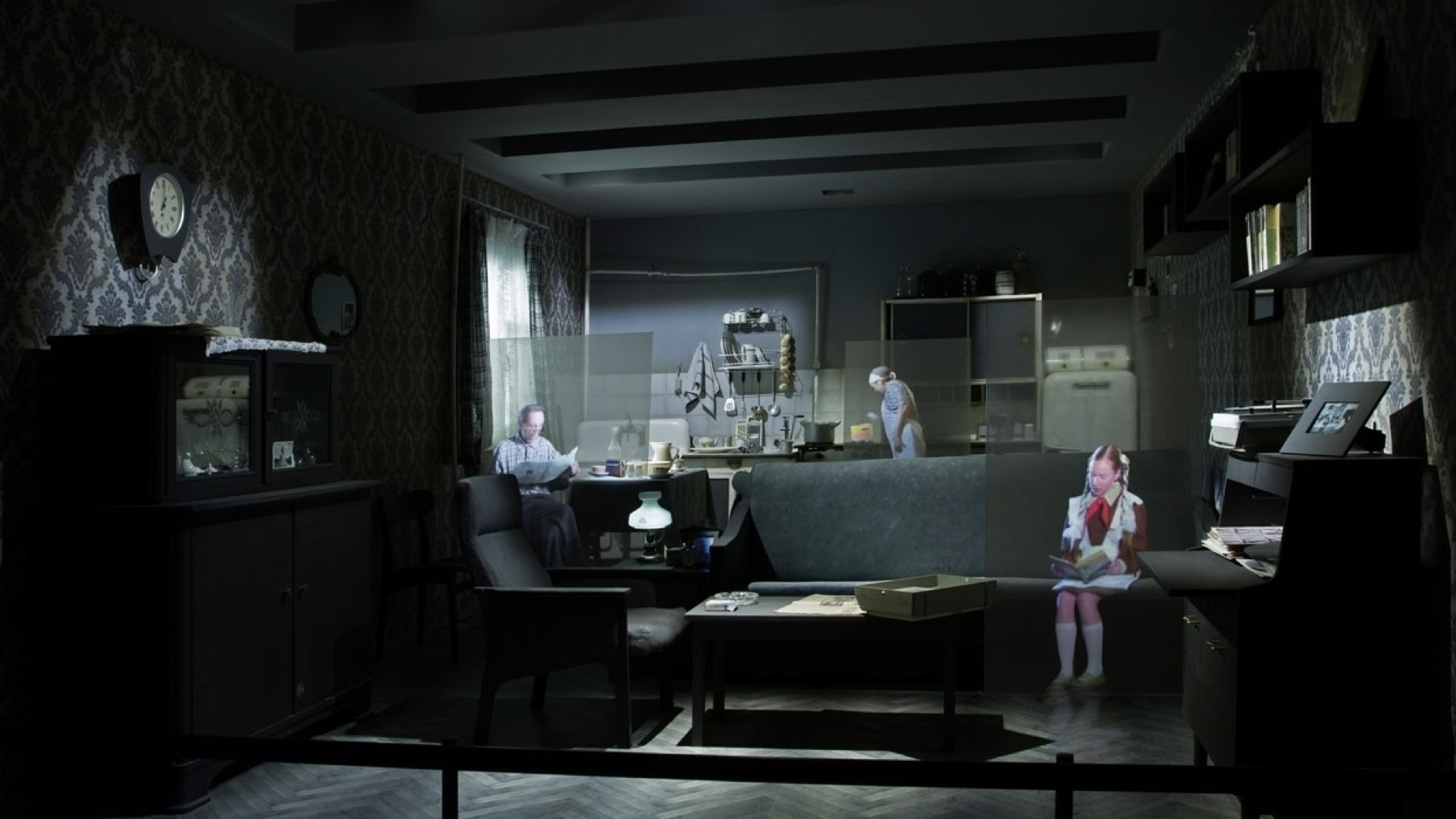
A recreation of a typical Soviet apartment, with a multimedia film highlighting life for a family during Communism.

During a time of mass imprisonment, gulags, and persecution, the Jewish faith was suppressed. This exhibit explored a time when the religion went underground.

A recreated Soviet apartment, brought to life through embedded linear media, highlights the everyday life of a family in Communist Russia.
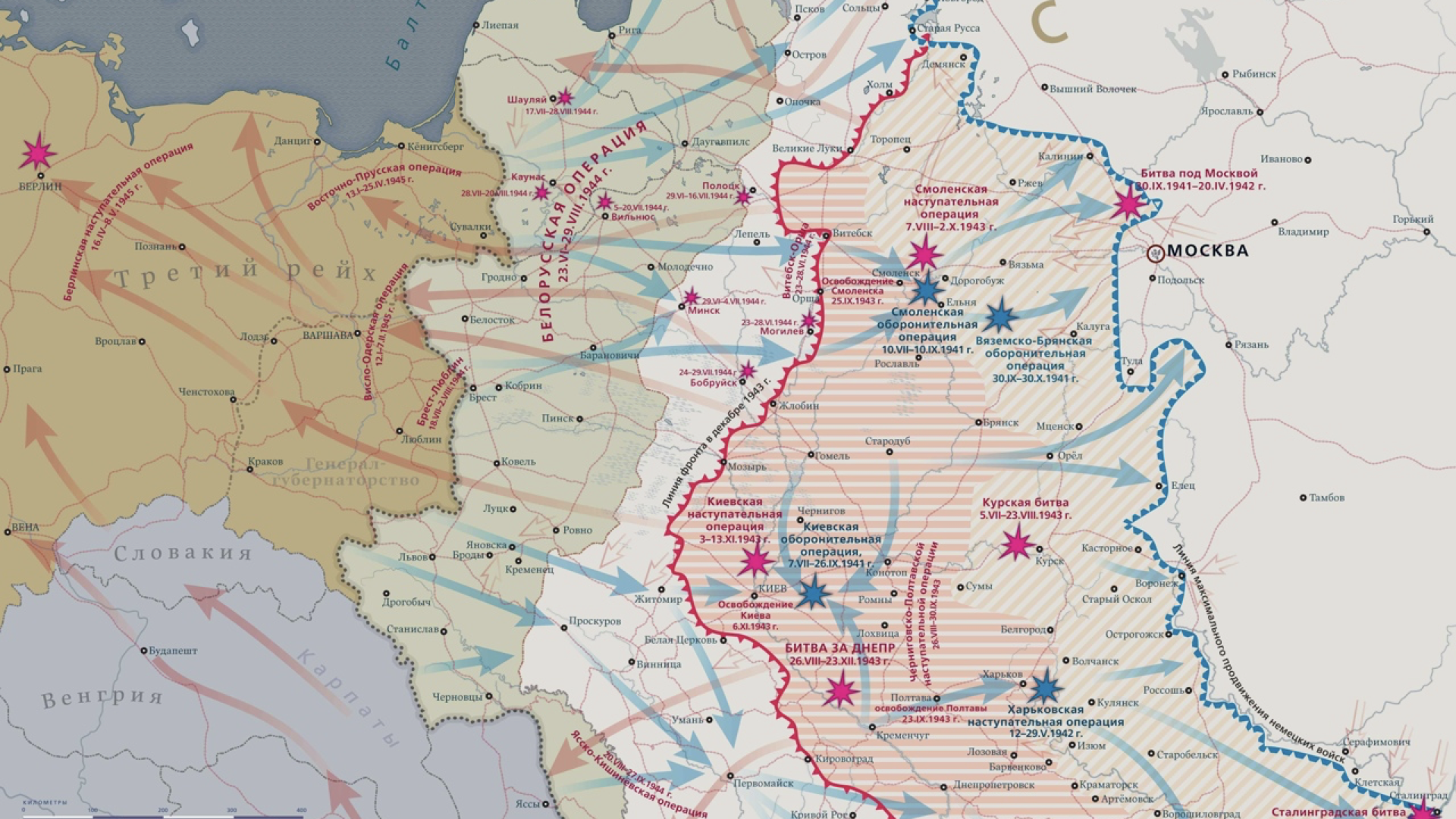
Over the course of two years, 16 custom, hand-drawn maps were developed for the project. At almost three meters tall each, the immersive maps told a far more emotional story than political borders—wars, power struggles, economic shifts, and the fight for a better world.

The maps—backlit and expansive—were an introductory bookmark to each new section of the museum, providing a window into the country’s zeitgeist and shifting political landscape.

Each exhibit section featured a mechanical, hands-on interactive of stories that deserved a more 1:1 experience. This particular map looked closer at the Jewish Diaspora.

Elevation of one section of the Story Path, a 700-foot long graphic, 18’ high graphic containing custom illustrations, maps, photographs, quotes, artifacts, and three separate timelines.

Wrapping the entire museum, with a height of 18 feet and spanning almost 700 feet long, the Story Path contains custom illustrations, maps, photographs, quotes, artifacts, and three separate timelines. The color palette of the Path changes as time marches forward.
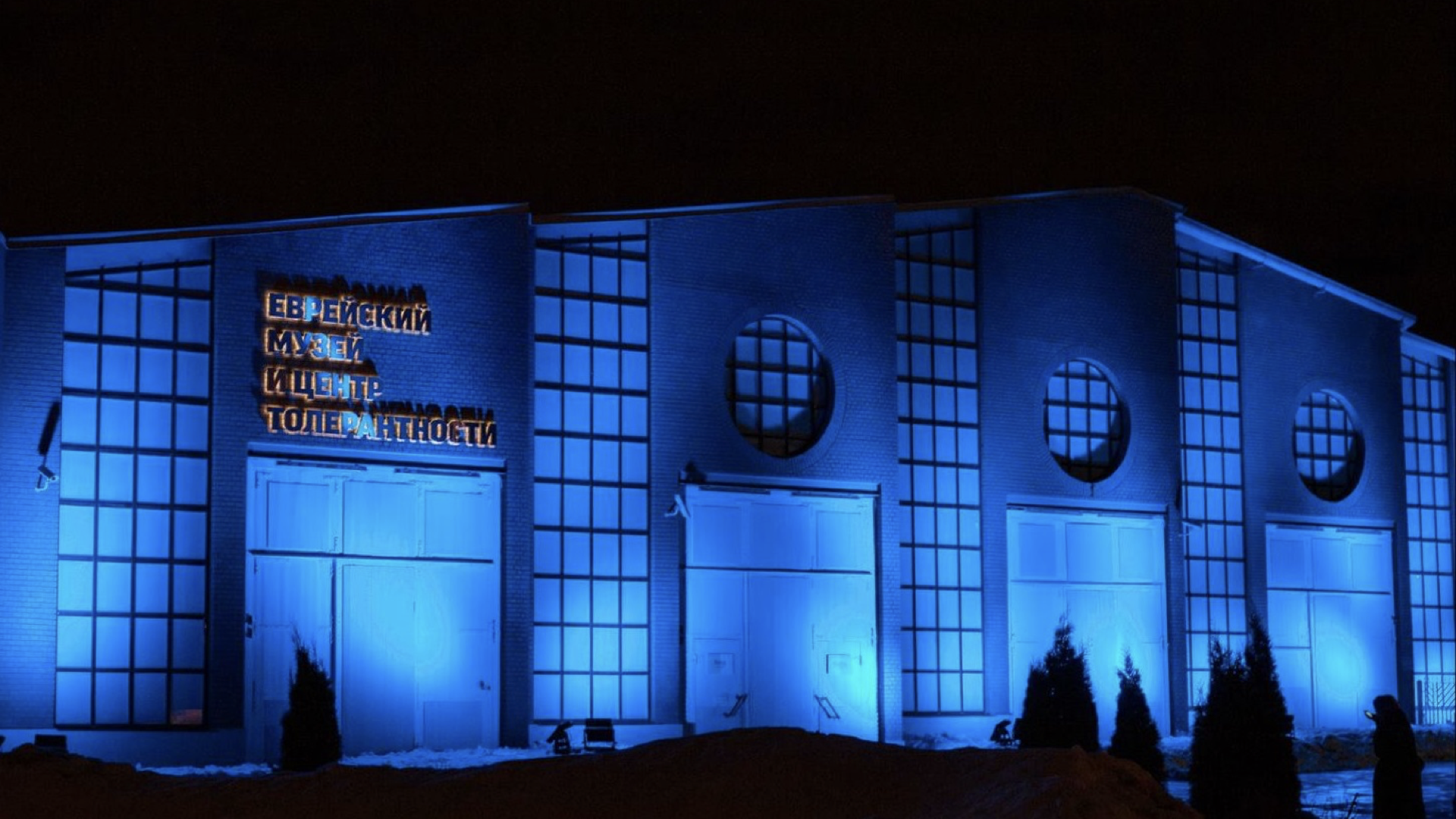
The Museum is housed in the Bakhmetevsky Bus Garage, a Russian Constructivist landmark designed in 1926. Because of its unique design—supported by its ingenious roof—the expansive space has few columns. It allowed for the museum to have a completely open floor plan.

Sample elevation and detail of the wayfinding program developed for the Jewish Museum in Moscow.

Created dramatic animations of Hebrew text transforming into the seven days of creation. In 2012, it was a bold interactive. In 2021, it’s still a shock I convinced an Orthodox Jewish client re manipulating Hebrew characters, considering they are seen as sacred.
